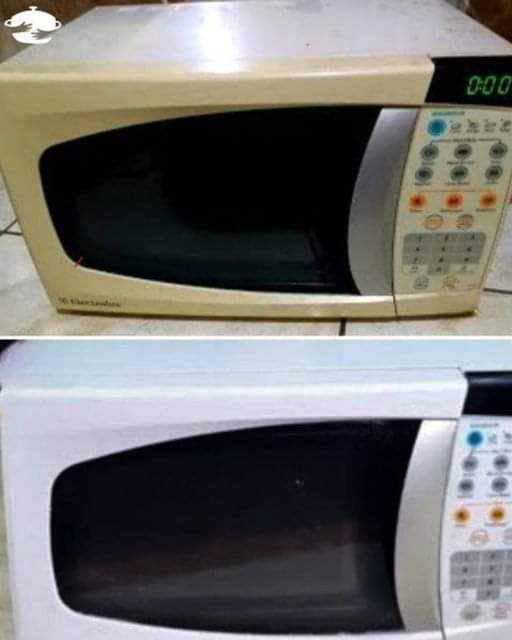ADVERTISEMENT
How to Make White Yellow Plastic of Household Appliances Look New Again
Over time, plastic parts of household appliances—especially those that are white or light-colored—can develop an unsightly yellowish tint. This is a common issue for appliances like refrigerators, dishwashers, microwaves, and even kitchen gadgets. This yellowing can occur due to a variety of reasons, including exposure to heat, UV light, and the natural oils from our hands. Fortunately, there’s a simple, effective way to restore these surfaces and make them look as good as new.
In this guide, we will share an easy, cost-effective solution to remove yellowing from white plastic and bring back the appliance’s original brightness. Read on for tips, tricks, and a simple step-by-step process!
Why Does Plastic Turn Yellow?
Before diving into how to fix yellowed plastic, it’s important to understand why this happens:
- UV Exposure: Plastic is sensitive to ultraviolet (UV) light, and prolonged exposure can cause it to break down, resulting in a yellowed appearance.
- Heat and Chemicals: Household appliances often generate heat, and over time, this heat combined with chemical exposure (such as cleaning products, food stains, or natural oils) can cause plastic to discolor.
- Oxidation: Plastic surfaces undergo a process called oxidation, which occurs when the material reacts with oxygen in the air, leading to yellowing over time.
Effective Method to Remove Yellowing from Plastic
Luckily, you don’t need to spend a fortune replacing parts or appliances. A few household items can work wonders in restoring the original whiteness of your plastic appliances. The method we’ll outline uses hydrogen peroxide, which is an excellent and safe agent for whitening plastic without damaging it.
What You’ll Need:
- Hydrogen Peroxide (12% or higher for best results; 3% can also work, but it might take longer)
- Plastic Wrap or a Plastic Bag (to cover the appliance)
- Clean Cloth or Sponge
- A Bowl or Small Container
- Gloves (to protect your hands from the hydrogen peroxide)
Step-by-Step Instructions:
- Clean the Surface: Before starting, make sure the plastic is free of dirt, dust, or grease. Use a clean cloth or sponge to wipe down the appliance. This will ensure that you’re working on a clean surface and that the hydrogen peroxide can effectively reach the yellowed areas.
- Prepare the Hydrogen Peroxide: Pour the hydrogen peroxide into a small container. If you’re working with a large appliance, you may want to use a larger amount to soak the yellowed plastic. Make sure the hydrogen peroxide is at least 12%, as this will provide more effective results. However, you can use 3% hydrogen peroxide if you prefer a more diluted solution.
- Apply the Hydrogen Peroxide: Dampen a clean cloth or sponge with hydrogen peroxide and gently apply it to the yellowed areas of the plastic. Be generous with your application and ensure that the surface is fully covered. For appliances that have deeply yellowed areas, you can pour a small amount directly onto the surface.
- Cover the Plastic: Once you’ve applied the hydrogen peroxide, cover the area with plastic wrap or a plastic bag. This will create a sealed environment that helps keep the hydrogen peroxide moist and prevents it from evaporating too quickly. Leave the appliance wrapped for a few hours (up to 4-6 hours, depending on the level of discoloration).
- Let the Sun Help: For best results, place the appliance in direct sunlight while it’s covered. UV rays from the sun help the hydrogen peroxide work faster and break down the yellowing. If you’re doing this indoors, you can skip the sunlight step, but the process might take a bit longer.
